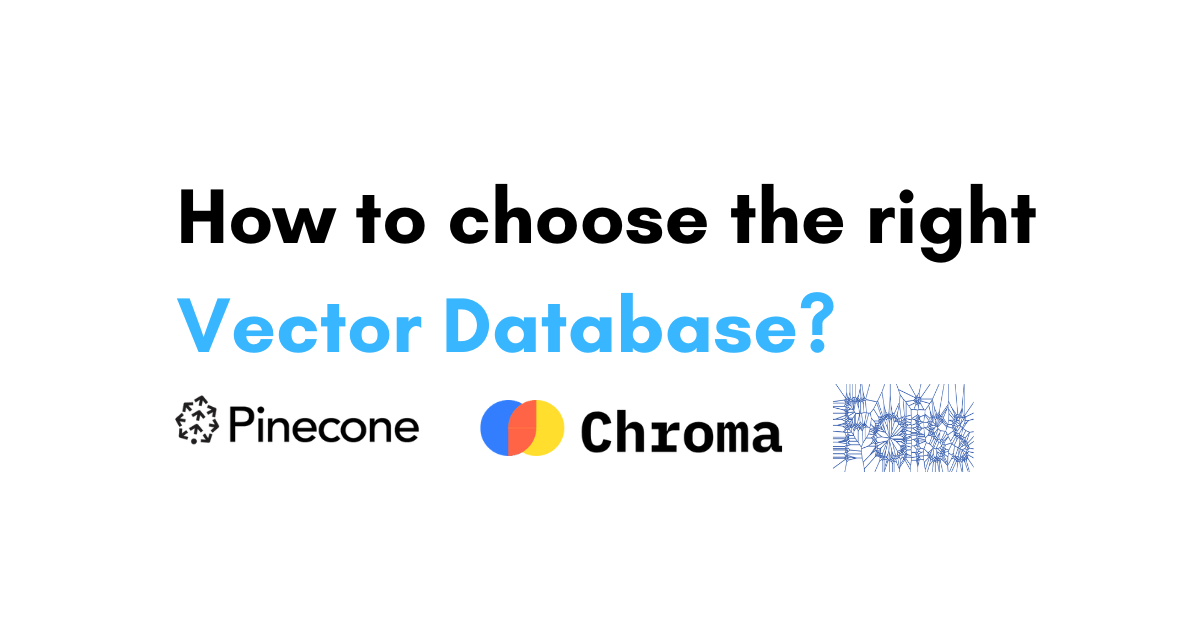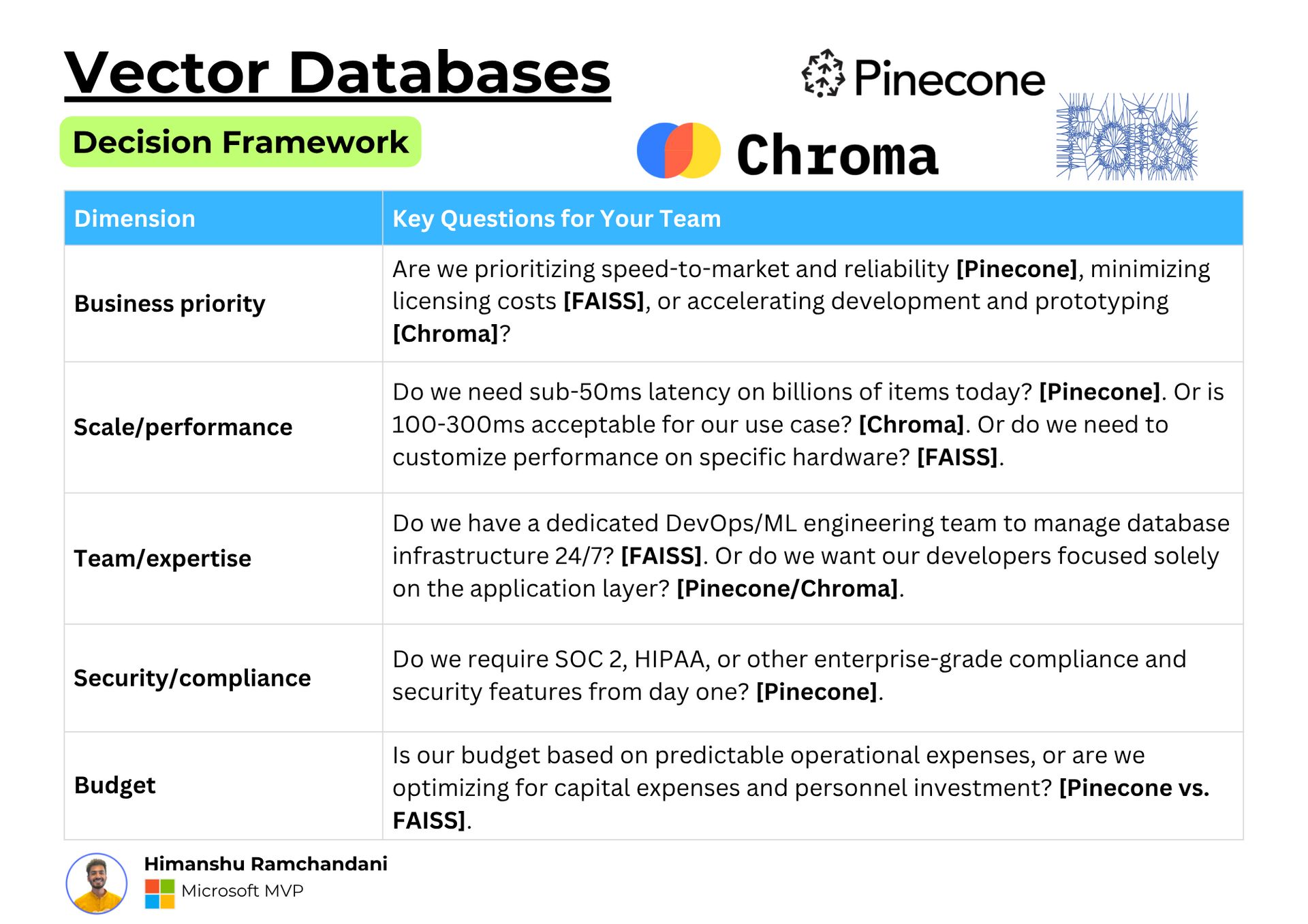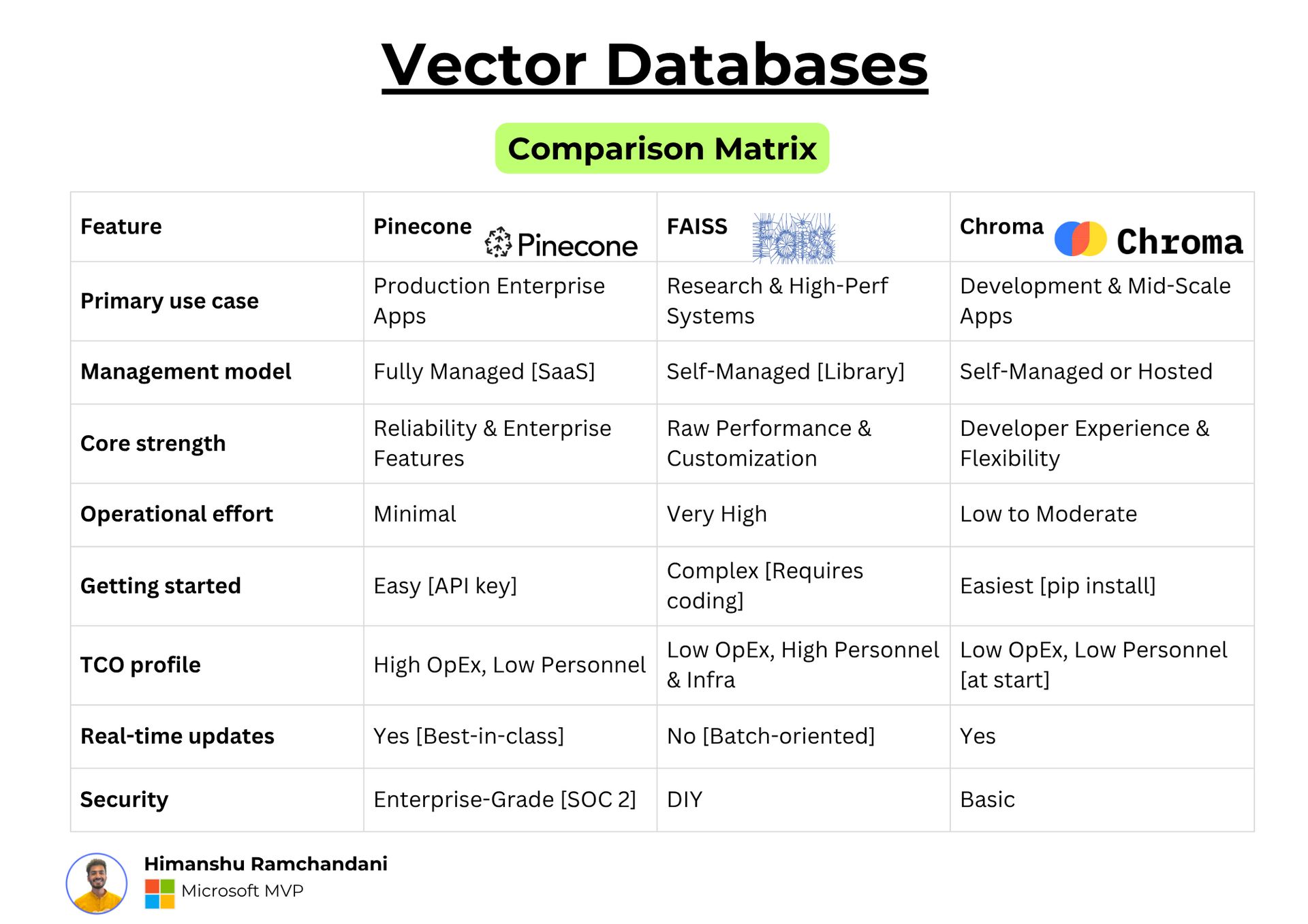- the master
- Posts
- How to Choose the Right Vector Database? [Pinecone vs Chroma vs FAISS]
How to Choose the Right Vector Database? [Pinecone vs Chroma vs FAISS]
Pinecone vs Chroma vs FAISS, Decision framework and comparison matrix for vector databases.
Professionals asked this question multiple times. Today’s newsletter breaks down how to choose a vector database for your product/project.
In today’s edition:
Dive Deep Drill— How to Choose the Right Vector Database?
Build Together— Here’s How I Can Help You
The Elite - an AI Leadership Accelerator. I am lauching a new version of this program. Join the waitlist by replying to this email “The Elite“ and I will share the roadmap with you.
[Sponsor Spotlight]
Start learning AI in 2025
Keeping up with AI is hard – we get it!
That’s why over 1M professionals read Superhuman AI to stay ahead.
Get daily AI news, tools, and tutorials
Learn new AI skills you can use at work in 3 mins a day
Become 10X more productive
[AI Deep Dive]
How to Choose the Right Vector Database? [Pinecone vs FAISS vs Chroma]

Himanshu Ramchandani
Vector databases are the engines behind AI use cases, such as semantic search, recommendation systems, and retrieval-augmented generation (RAG).
But when it comes to choosing the right one, it’s easy to get overwhelmed.
Let’s simplify the choice.
Whether you’re building an enterprise-grade AI product, running experiments, or prototyping your next LLM feature, you’ll likely come across three names:
Pinecone
FAISS
Chroma
Each has its sweet spot.
Here's how to think about it.
1) Pinecone
It is production-ready and an enterprise choice.
If you're building a serious AI application for production and don’t want to deal with infrastructure headaches, Pinecone it is.
no need to worry about servers or scaling
handles billions of vectors with sub-50ms query times
SOC 2 compliance, RBAC, namespaces
real-time updates and hybrid (keyword + semantic) search
But there’s a trade-off, it's not CHEAP.
Pricing starts at $50/month and can grow quickly with scale.
Use Pinecone if:
you want low latency and real-time performance
security and compliance are non-negotiable
your team doesn’t want to manage infra
2) FAISS (Facebook AI Similarity Search)
FAISS is open-source, lightning-fast, and extremely customizable.
But it’s not a plug-and-play solution.
Think of it more like an engine, you need to build the car around it.
unmatched performance, especially with GPU acceleration
tons of indexing and quantization options
works great for massive-scale or research use cases
no cost to use, but high cost to operate (DevOps, infra, etc.)
But it’s not ideal if you need real-time updates, user management, or want something easy to scale.
Use FAISS if:
you have a strong engineering team
you care deeply about optimization and control
you're building custom AI infra from the ground up
3) Chroma
Chroma makes vector search ridiculously easy to start.
Install it with pip, and you’re off to the races.
python-first and developer-friendly
great for local dev, prototyping, and LLM apps
supports LangChain and LlamaIndex out of the box
can run embedded or as a lightweight server
It’s not built for heavy enterprise production (yet), but it’s perfect for early-stage work or mid-scale apps.
Use Chroma if:
you're building LLM-based prototypes
you want fast setup and easy iteration
you’re not dealing with billions of vectors (yet)
How to Choose in 3 Steps
Ask your team these questions to guide your decision.
[Step 1] Assess Your Strategic Context by asking questions

[Step 2] Use Comparison Matrix

[Step 3] Make Your Decision with a Phased Strategy
You don't have to be locked into one choice forever.
The smartest approach is often a phased one.
Based on the phase of your product/project, you can change your decision.
My Hybrid Strategy
My personal favorite is going for a hybrid approach for almost every problem (not always).
start with Chroma for fast experimentation and proof of concept
move to Pinecone when you need production reliability and scale
use FAISS if you're doing research or need to heavily optimize performance at low cost
Each tool serves a different phase of your AI journey.
The key is to match your current goals with the right level of complexity, cost, and control.
Choose wisely, and your vector database won’t just support your AI goals, it’ll accelerate them.
One last thing:
AI Deep Dive
Today’s deep dive topic is part of my series “AI Deep Dive“
In this series, I am inviting you to submit a real-world problem you are struggling to solve with AI.
Today’s question was: “How to choose the right Vector Database?“ and was asked by “Karan Mittal [LinkedIn]“ - Solutions Architect & Data Scientist @Dextar
Reply to this email with your question.
Want to work together? Here’s How I Can Help You
AI Engineering & Consulting (B2B) at Dextar—[Request a Brainstorm]
You are a leader?—Join [The Elite]
Become an AI Engineer in 2025—[AI Engineer HQ]
AI Training for Enterprise Team—[MasterDexter]
Get in front of 5000+ AI leaders & professionals—[Sponsor this Newsletter]
I use BeeHiiv to send this newsletter.
PS: What do you want to learn next?

Reply